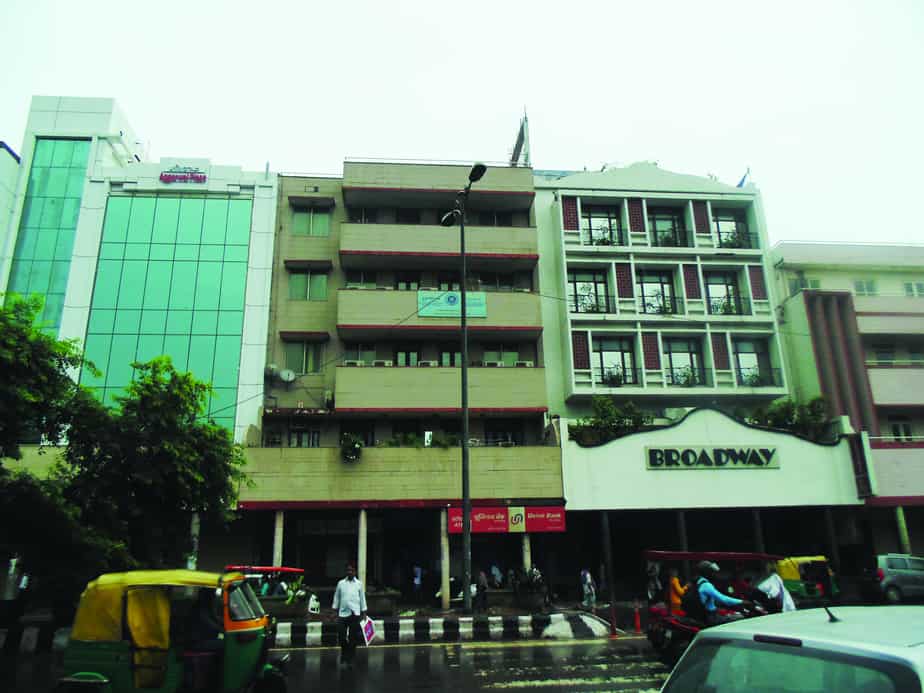Landlords have been appealing for amendments to the Delhi Rent Control ACT, which in its present form is not only outdated but also acts against the interests of the middle class and the poor
Rajesh Kumar has been paralysed on his left side since 2011. His three-floor home which could have acted as a source of income for him and his wife at this very hour of need is under rent control. This means, they have been able to make only Rs 500 every month from rent.

Before the stroke, he had a job in a private company which gave him neither Provident Fund nor retirement money. Nor does he have any children to fall back upon. His building, which was rented out to commercial enterprises, has just seen one shop finally vacated. In another, which was sub-let, the tenant refuses to budge. A third was locked by the tenant, who has not been seen for two years.
The reason for his helplessless is the Delhi Rent Control Act, 1958, which has not been amended for the last 60 years, despite all the radical changes in the city over the decades. It applies to all properties for which the rent is upto Rs 3,500 per month, which might have been a good amount then but is a paltry sum by today’s standards. Obviously, there are many landlords and landladies for whom the law defies logic and causes extreme anguish. The total number of Rent Control cases and appeals before district/ additional district judges in Delhi stand at a massive 10,956. Of these, appeals stand at 494. A huge percentage — 27.9% — of all civil cases are under the DRC Act as of June 30, 2017.
Advocate Shobha Aggarwal leads a Committee for the Repeal of Delhi Rent Control Act. She is the lead petitioner in the case filed in 2010 by a group of women property owners challenging the constitutional validity of the Act. She hopes the next hearing, scheduled for September 6 will see the Delhi High Court finally deliver a concrete judgement either crushing the Act or ruling in favour of amendments that the Committee is pushing for.
Take for example, Connaught Place, which has 105 properties. It is shocking the Embassy restaurant pays a lowly Rs 312 per month, the equivalent of a a cup of coffee with taxes. Then there are properties in Paharganj and markets in GK 1, Green Park, Shahdara and Old Delhi. Most of them are crumbling as owners are not getting enough rent to maintain them.

Aggarwal has been fighting for this cause for 29 years, ever since she became an advocate in 1989. At that point, she had taken over her own family’s property case, which her grandfather had first lodged in 1978. The conclusion in their favour — to part of the building on Asaf Ali Road — only came in 2002. By then her grandparents were gone, never to see the positive outcome of the long-drawn legal battle.
Every case, Aggarwal says, has to be fought till the bitter end. “No tenant under Rent Control vacates a property without fighting”, the only other way to get tenants to leave would be to buy them off with a large sum of money, “which my family didn’t have.”
“Growing up, we all lived here. There were 10 of us living in three bedrooms”, and they definitely required the room which was rented out. “By the time we got possession, many of us had grown up and moved,” she adds.
Her grandparents had constructed the building, after her grandmother bought the land in 1954 by selling off her jewellery. “It was a period after independence, the country was coming up”, but then “the government took two and half floors of this building.”
The building which should have been fetching them lakhs in rent each month only gave them an income of a few thousands. For the past 35 years, Aggarwal says, two and a half floors housed the income tax offices, paying a meagre rent of Rs 1,640. The rest of the area had tenants paying Rs 100-400. Now, the building has been won back bit by bit, with the last victory in 2015.
With everything under Rent Control then, they weren’t really worried. “We hoped the rent control would go away,” says Aggarwal. But as time passed they realised this hope would not come true but in the form of a legal case.
The petition now challenges the DRC Act as being a violation of Article 14, 19(1) (g) and 21 of the Constitution.
The Delhi Rent Act, 1995 enacted to replace the DRC act has not been enforced till date. The directions of the committee on Subordinate legislation, 1999 and the Committee on Petitions, Rajya Sabha, 2004 to notify the 1995 Act stands ignored. Aggarwal says that without passing that amendment, in 2013 the government moved to Rajya Sabha to repeal this act instead. This she says was just a delaying tactic, which still continues with successive governments to appease their voters, who are powerful traders.
Caught in a tangle
Ved Prakash Sharma, a Secretary of the House owner’s association, Karol Bagh, saw his own home stuck in litigation for 42 years. The tenants (the house had been sub-let) vacated the home in July of last year, with the fight starting in 1974 by his father.
Exemplifying just how long a case can drag on, the court in 1981 ruled in the favour of the landowner but the sub-tenant went in for an appeal. It went back and forth till in 2017, Sharma and his grandson went to the court to see the ruling in their favour, his father being long gone.
Generations of one family are caught in the net of claiming their rightful property. But after they get it back like Sharma has, they are caught in a limbo. This is because, as Aggarwal puts in, without a law in place, “they don’t want to again be put back into the same situation where they were 42 years back”. In Sharma’s case, the idea of even living in the property which gave them enough anguish, is unconscionable.
To put things in perspective, of just how the Rent Control Act may have affected Delhi and other regions in the country, Aggarwal points to the need of 90 million homes all over the country. And in this situation, 11 million are refusing to give their homes for rent.
A law which was meant to protect middle-income tenants has hurt the same class of families and even the poor.
Even in the case of Mumbai, the drastic effects of this control can be seen. In a 2015 paper, Decline of Rental Housing In India: The Case Of Mumbai, showed that in 1961, self-occupied and tenanted housing were in about equal proportion. Between 1961 and 2010, about 95% of residential construction was for ownership and only 5% for rental. Which means, many don’t have a place to live.
An example of the rich getting subsidised is from Aggarwal’s own building where Sahni Sons, now relocated to Daryaganj, occupied the ground floor since 1955. The showroom, about 800 sq ft, fetched the Aggarwal family Rs 440 per month till the court ordered the tenant to pay Rs 20,000 per month. They vacated the premises two years later in 2015.
Many families buy a home as a means for a steady income, especially when retirement comes calling. Back in 1972, Sandeep Singh Chahal’s father, a professor of English in Mathura, decided to build a home, after taking a loan, in Delhi’s Karol Bagh.
Unaware of Rent Control, he was in courts fighting for his home by 1981. What should have been a laid-back retirement was anything but. Chahal says that even though they moved ito the second floor, they would be constantly fearful of police barging in and harassing the family.
To regain the first floor of the building, Chahal’s father appealed in court that with his sons reaching maturity, marriage would come soon and there would be a need for more space. He won the case.





